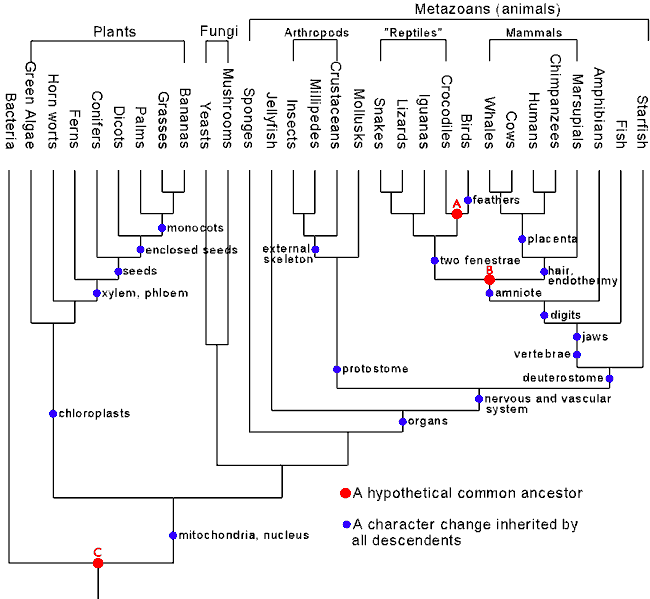Phylogeny makes use of shared characterstics. That is the whole point. If there were no shared characteristics, then phylogeny wouldn't work. I think it funny that you expect us to instead to use a diagram that you claim isn't even feasible.
Not sure what you're getting at here. I already know phylogenetic models use shared traits. Why do you think I started this thread? I'm simply pointing out how the illusion is sold to the public. They look at these nested hierarchies and assume it describes Common Descent when it's just abstract nested groupings.
No, what it shows is that evolution explains these nested hierarchies that were apparent even before evolution was accepted by biologists. That is the power of the theory at work. What does creationism explain?
Evolution doesn't explain it. Evolution accommodates it, as it could accommodate many different nested hierarchies. Evolution also predicts the breakdown of nested hierarchies through rapid loss of traits. It predicts, (accommodates) nearly anything.
No. If brown-eyes were a shared trait, then it would appropriate to use. Since it is not a shared trait, then it is not appropriate to use. This isn't rocket science.
This makes no sense.
How exactly is brown-eyes not a shared trait when millions of people share it?
I am not familiar with this example, but I am sure it is like the platypus's "bill." A platypus's bill may look similar to a bird's bill, but it is morphologically and developmentally completetely different. The similarities in this case are superficial, and thus quite correctly seen as an example of convergent evolution. If this skink had a true mammalian placenta, then you would have a valid point. We don't have such chimeras in the real world, however.
It's extremely similar to the mammalian placenta, actually.
Blackburn 2012:
In the viviparous lizard Trachylepis ivensi (Scincidae) of central Africa, ...shows that this species has evolved an extraordinary placental pattern long thought to be confined to mammals, in which fetal tissues invade the uterine lining to contact maternal blood vessels. The vestigial shell membrane disappears very early in development, allowing the egg to absorb uterine secretions.... T. ivensi represents a new extreme in placental specializations of reptiles, and is the most striking case of convergence on the developmental features of viviparous mammals known.
Invasive implantation and intimate placental associations in a placentotrophic african lizard, Trachylepis ivensi (scincidae) - Blackburn - 2011 - Journal of Morphology - Wiley Online Library
If a mammal were found with something that was superficially like a feather, then that would be considered convergent, yes. If a mammal were found with feathers just like a bird, then you are wrong. Such an occurance would be a real problem for the theory.
Nope. It would be named convergent evolution, no doubt about it. You only say otherwise because it seems safe to say so at this point. But we have discovered countless incredibly complex features that have been chalked up to convergent evolution. I've seen biologists admit that they would in fact assume true feathers found on mammals is convergent.
Evolution predicts the possibility that mammals could convergently evolve true feathers under similar selection pressures as dinosaurs. And there is no rule of Evolution that you can point out that says otherwise.
One of the triumphs of the theory is that it explains what we find in the fossil record very well. I used the example earlier of jawless fish first appearing before jawed fish, and how that fits in well with the hiearchy.
So? If jawed fish appeared before jawless fish, evolution would just say the ancestors of jawed fishes are missing, and jawless fish are a reversal, or even a primitive group that evolved contemporaneously with jawed fishes, but didn't show up in the record till afterwards.
You really think Evolution is not well insulated by these things? Jawed before jawless poses absolutely no problem whatsoever and is easily rescued by ad-hoc devices.
It would.
No, it wouldn't. Evolution can accommodate many different character arrangements.
Upvote
0



